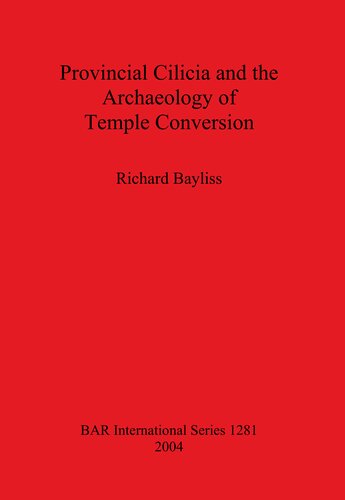

Most ebook files are in PDF format, so you can easily read them using various software such as Foxit Reader or directly on the Google Chrome browser.
Some ebook files are released by publishers in other formats such as .awz, .mobi, .epub, .fb2, etc. You may need to install specific software to read these formats on mobile/PC, such as Calibre.
Please read the tutorial at this link: https://ebookbell.com/faq
We offer FREE conversion to the popular formats you request; however, this may take some time. Therefore, right after payment, please email us, and we will try to provide the service as quickly as possible.
For some exceptional file formats or broken links (if any), please refrain from opening any disputes. Instead, email us first, and we will try to assist within a maximum of 6 hours.
EbookBell Team

5.0
100 reviewsThis is a study of the Christianisation of the built environment: the physical manifestation of the transition from paganism to Christianity in the Greek East. The core of the work comprises an archaeological exploration of temple conversion in terms of structural mechanics, logistics, chronology and socio-political implications. The author provides a re-assessment of the fate of the temples – their deconsecration, destruction, preservation, abandonment and re-utilisation – by supplementing and questioning the historical record through reference to the wealth of available archaeological evidence. Detailed chapters on the mechanics and chronology of particular forms of conversion scenario illustrate the emergence of an architectural vocabulary of temple conversion from the middle of the 5th century. In order to assess the impact of change on a local level, these primary issues are addressed through the archaeology of provincial Cilicia. Archaeological, historical and epigraphical evidence from over 250 structures in which the influence of a pre-existing temple has been detected, have been incorporated into a highly detailed database, providing a platform for information management and the analysis of trends in the fate of the temples. By looking beyond the subjective narratives of the primary historical sources, this study demonstrates that the archaeological evidence can provide us with a deeper understanding of the complexity and variability of temple conversion as it occurred in individual urban contexts. This has enabled the formulation of a more coherent picture of its significance and situation in the cultural and physical transformation of the late antique city.